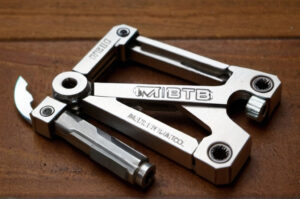Introduction to Hydration Pack Maintenance
Maintaining your mountain bike hydration pack is crucial not only for hygiene but also for the functionality and longevity of your equipment. Regular cleaning prevents the buildup of bacteria and mold, which can affect your health and the taste of your water.
Common issues stemming from neglect include the growth of mold in the reservoir and unpleasant odors, which can make the hydration pack unusable. The benefits of keeping your gear clean extend beyond health; it also ensures that all components function properly and reduces the likelihood of malfunctions during your rides.
Experts recommend cleaning your mountain bike hydration pack after each use, especially in hot weather or after long rides when sweat and back residue can contaminate the system. More thorough cleanings can be done on a monthly basis or according to the frequency and conditions of your rides.
Materials Needed for Cleaning
For effective cleaning, you will need specific agents and tools designed for hydration pack maintenance. Opt for mild soaps or specialized detergents that are safe for use on drinking systems to avoid damaging the materials or leaving harmful residues.
Soft brushes and sponges are critical for reaching every corner of the bladder and hose without causing scratches that can harbor bacteria. For combating bacteria and preventing mold, use anti-microbial solutions designed for hydration systems. Lastly, invest in good drying racks or hangers to ensure all parts dry completely and maintain shape.
Step-by-Step Cleaning of the Hydration Bladder
Begin by fully emptying the bladder to ensure no old water is left inside. You can use cleaning tablets specifically made for hydration packs or a mild solution of bleach and water to sanitize the reservoir.
Using a long-handled soft brush, scrub the interior surfaces gently but thoroughly to remove any residue or buildup. This step is crucial in preventing the growth of mold and bacteria.
After scrub It is important to rinse the bladder several times with clean, hot water to remove any traces of cleaning solution. Ensure thorough rinsing to avoid tasting soap on your next ride.
Cleaning the Drinking Hose and Bite Valve
Detach the hose and bite valve to clean each component thoroughly. For the hose, use specialized cleaning kits or DIY methods like thin brushes or fishing lines with a rag tied at the end to scrub the inside.
The bite valve should be disinfected as it is frequently in contact with your mouth. Make sure to rinse all parts well after cleaning and hang them up to dry completely, as leftover moisture can promote the growth of mold and mildew.
Washing the Backpack Fabric
The fabric of your hydration pack can often be cleaned in a washing machine on a gentle cycle with mild detergent, though hand washing is safer to prevent any potential damage. Check the manufacturer’s label for specific recommendations.
Address stubborn stains with spot treatments or stain removers before washing. Always air dry your hydration pack, as tumble drying can damage the materials or cause shrinkage.
Maintenance Tips to Extend Lifespan
Store your hydration pack in a cool, dry place away from direct sunlight when not in use. This prevents the materials from degrading and keeps the pack ready for your next adventure.
Perform regular inspections for any signs of wear or damage, especially checking for leaks in the bladder and hose. Keep zippers and fasteners clean and lubricated to prevent sticking and rust.
Establish a seasonal maintenance routine that aligns with your riding habits to ensure your hydration pack remains in top condition year-round.
Troubleshooting Common Problems
To handle mold and mildew, use a solution of vinegar and water to soak the affected parts before a regular cleaning session. If your bladder or hose has a leak, patch kits are available, but replacement might be necessary if damage is extensive.
For zippers that stick, graphite from a pencil or a specialized lubricant can help them slide smoothly again. Odor removal can typically be managed with baking soda or specialized cleaning agents designed for odor control.



